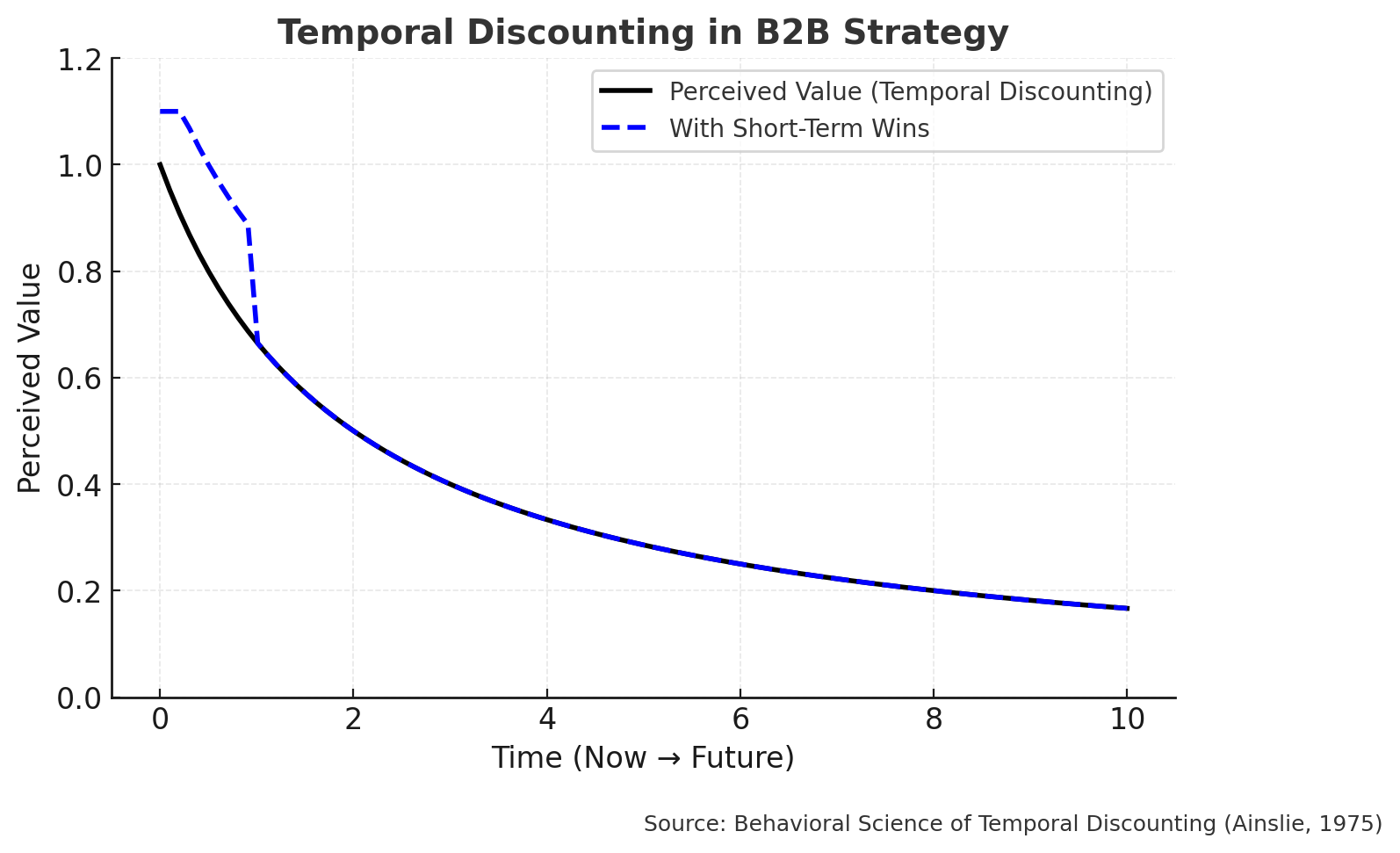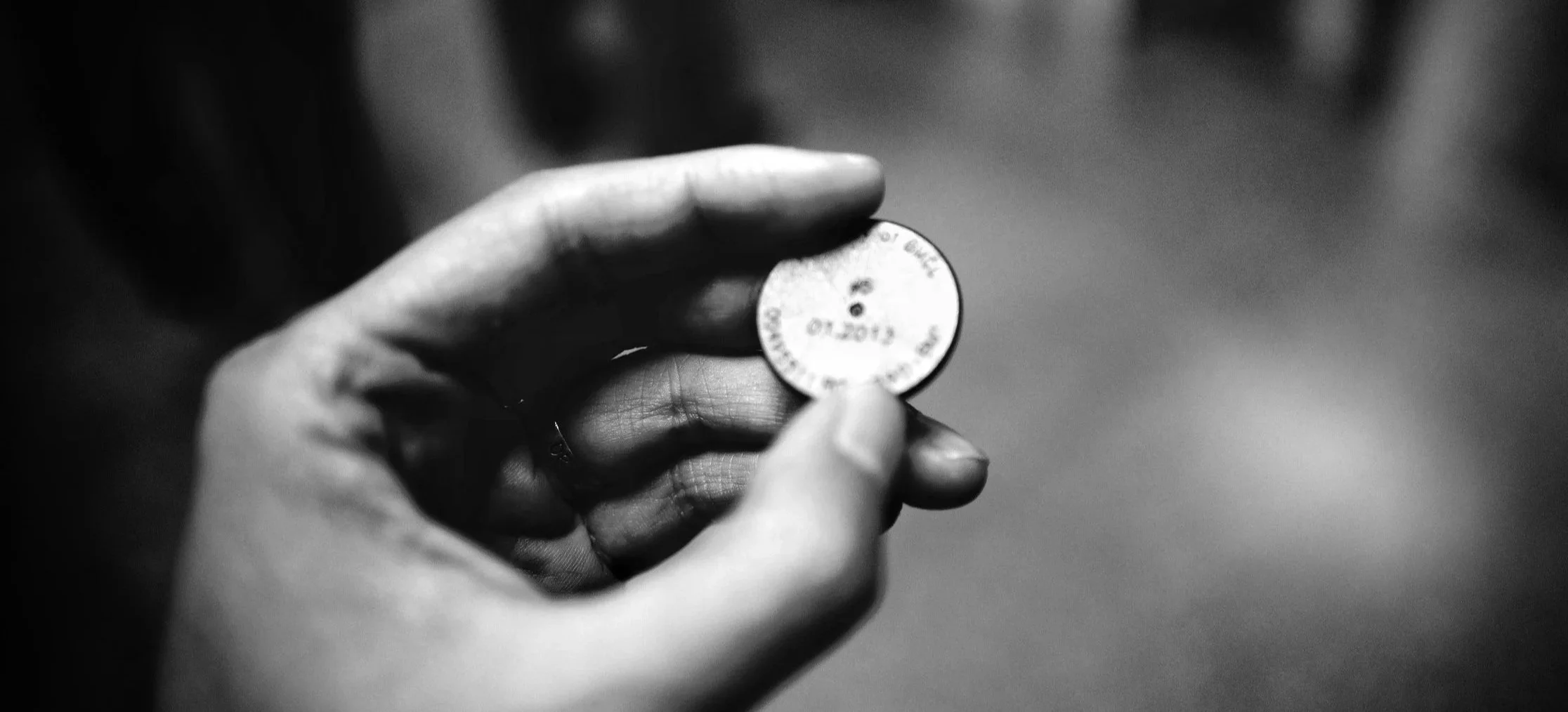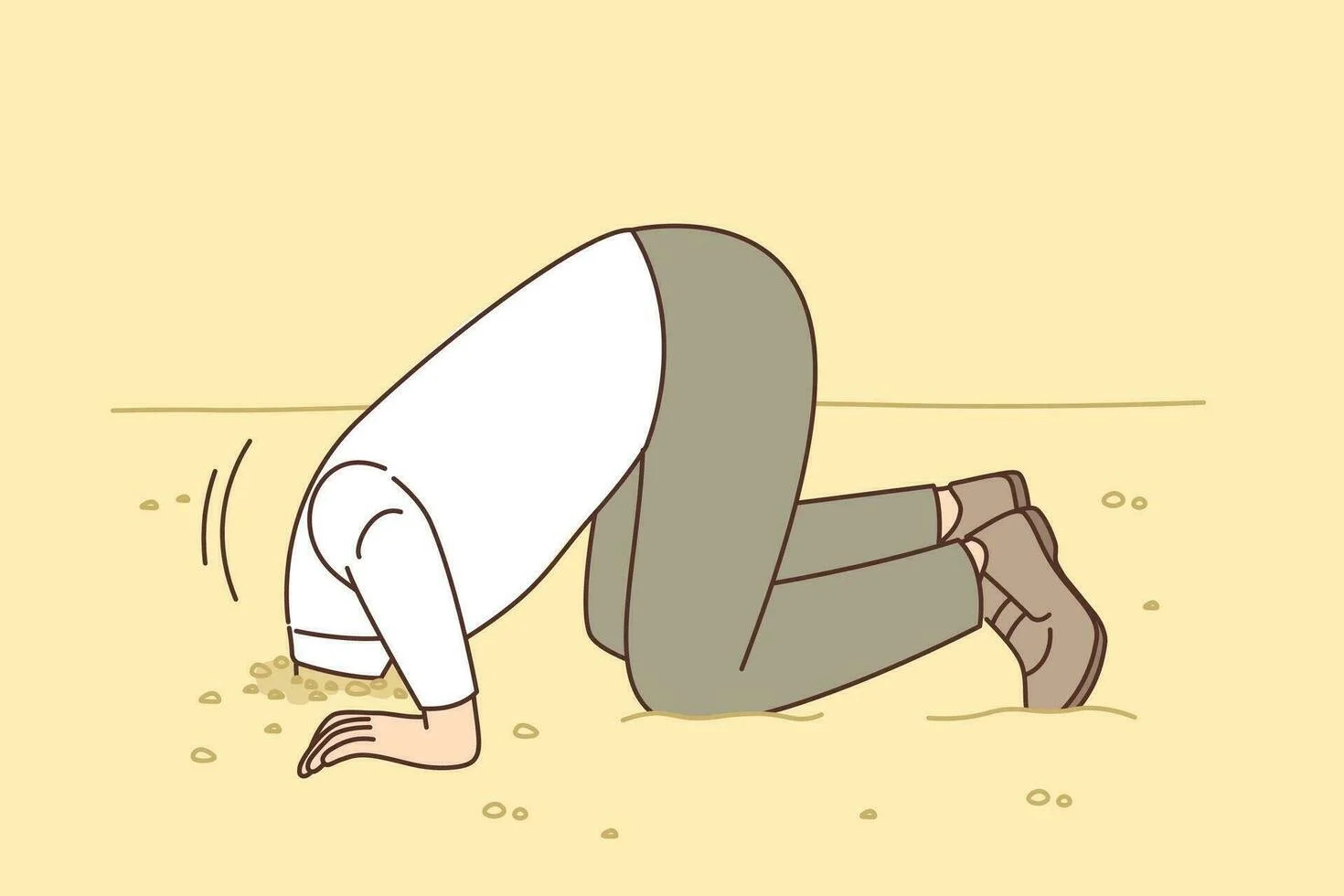Bite-size Behavioral Science
Bite-size Behavioral Science
This is Bite-size Behavioral Science. A little series that shares well-established social-behavioral psychological theories as shortcuts that anyone can use. And if anyone challenges you, just tell ‘em Master Max said so.
Silence is Golden: Why Silence Works in Negotiation
In commercial strategy work, the room often floods with words right after price, scope, or risk hits the table. We rush to justify. Procurement waits. The first side to break the quiet usually gives away information or concessions they didn’t need to.
Shhhhhhh negotiations at work.
Silence works because it pokes two reliable levers:
Need for closure (Kruglanski) makes ambiguity feel uncomfortable; a calm pause heightens the urge to resolve it, so counterparts clarify positions and trade-offs.
Information-gap theory (Loewenstein) says a missing piece creates a “mental itch”; your quiet opens that gap, and they scratch it by volunteering constraints, timing, or decision criteria. Layer that on top of basic turn-taking norms—people expect fast replies—and a 3–5 second pause becomes productive pressure without push.
How this works in the world:
FBI-trained negotiators and many top enterprise sellers pair calibrated questions with measured silence. After stating price or asking “How would you like to proceed,” they hold the space. The counterpart often reveals the real blocker—budget timing, a must-keep SLA, or a compliance clause—giving better levers than across-the-board discounts.
Didn’t pass FBI training? That’s okay. The same move shows up in high-stakes QBRs: one quiet beat after “Which outcome matters most this quarter?” surfaces priorities you can trade on.
How to use it:
Script your pauses. State a precise anchor, then count to five while you take a note. Ask one calibrated question (“What would this fail to solve for you?” or “What’s the obstacle to moving this in-quarter?”) and let the need for closure and the information gap do their work. Label what you hear (“Sounds like timeline risk”) and pause again. Move to MESO (Multiple Equivalent Simultaneous Offers) choices that trade money for what they value (speed, scope, IP). Keep a give-get rule: if you move on price, get a faster signature, a reference, or reduced scope. Silence first, then structure.
Anchoring and Adjustment: Set the first number or live with theirs
In commercial strategy work, negotiations often stall or skew once procurement drops a “budget number.” If you haven’t framed value and put a credible figure on the table, that first number becomes the reference point that pulls everything down—scope, timing, extras.
This is Anchoring and Adjustment: people rely heavily on the first salient number and only move part-way off it. Two useful nuances: the precision effect (specific anchors like 187,500 feel more researched and win more favorable counteroffers than round ones) and contrast framing (showing a higher reference option makes your target look reasonable by comparison).
Here's an example in a consumer space many are familiar:
Data has shown that homes listed at precise prices attract higher final offers than similar homes with round asks; buyers infer the seller “knows something,” and adjust less.
In B2B, enterprise software sellers routinely publish a high “list” and an even higher premium tier; the visible ladder reframes the mid package as sensible rather than expensive—anchoring the negotiation before discounts ever start. (Movie goers, fast food French Fry coneseuires, doesn't this sound familiar?)
Here's how you can use it:
Lead with a value-tied, precise anchor and a one-line calc that makes it feel earned (“187,500 = 0.7% of the revenue lift modeled on last year’s run rate”). Offer MESO packages (Multiple Equivalent Simultaneous Offers)—three simultaneous options that trade money for levers clients care about (speed, scope, price). For consultants, they might package services as “Sprint (fast/lean), Standard (balanced), Enterprise (full IP & enablement)” to anchor value and control trade‑offs.
And always label a reference option above your target to set contrast, then make every concession a give-get (“We can move 10k if we remove the in-quarter test-and-learn sprint”). Finally, close by restating the anchor and the trade-offs in plain English so the reference point that lingers is yours, not theirs.
The TLDR version: Stop negotiating one deal—negotiate three at once.
Strategy Meets Psychology: Temporal Discounting and Why the Future Feels Too Far Away
Humans have a well-documented bias: we undervalue the future compared to the present. Known as Temporal Discounting, this principle explains why we delay saving for retirement or underinvest in long-term projects. The present feels tangible; the future feels abstract. For B2B companies, overlooking this bias can stall adoption, weaken positioning, and make it harder to sell long-term value propositions.
Commercial strategy provides a clear lens. Take enterprise software pricing. Many SaaS companies know their platform will save clients millions over several years — but that future payoff won’t close the deal alone. Salesforce, for example, accelerates adoption by emphasizing immediate ROI metrics like “time saved per rep” or “deals closed faster” in the first quarter of use. By collapsing future benefits into short-term wins, they overcome the tendency of B2B buyers to discount value that only shows up down the road.
On the brand side, consulting firms like McKinsey and Accenture position themselves not just as architects of “future transformation” but as enablers of visible progress today*. Instead of selling only on lofty five-year visions, they highlight case studies showing near-term efficiency gains, proof-of-concepts, or early cultural shifts. This storytelling strategy reduces the psychological gap between present and future by anchoring long-term credibility in immediate results clients can see and feel.
This is where behavioral science earns its keep. Commercial strategy asks, How do we capture value? Brand strategy asks, Why will people value us? Temporal discounting reminds us that clients — even in boardrooms — are human. They privilege today over tomorrow. Smart companies design strategies that respect that bias: front-loading immediate wins, while keeping the longer-term story in view.
*It’s worth noting that “visible progress today” only matters if it’s real. Some large consultancies — McKinsey and Accenture among them — have been criticized for producing massive decks without equipping clients with the tools or execution game plan to act on them. The risk? Over-promising long-term transformation while under-delivering short-term results.
Strategy Meets Psychology: The Paradox of Choice and Why Less Can Mean More
In business, it’s tempting to believe that more options equal more appeal. More products, more packages, more ways to say yes. (Take yourself back to the time you visited that popular cheesecake restaurant) But psychology tells a different story. The Paradox of Choice shows that while people like having options, too many can overwhelm them, leading to decision paralysis or regret after purchase.
This principle has sharp implications for both commercial and brand strategy. Imagine a software company offering ten different subscription packages. On paper, that seems customer-friendly. In practice, it slows sales, confuses buyers, and makes it harder for sales teams to guide decisions. Narrowing to three clear tiers not only simplifies the purchase process but often boosts conversions and customer satisfaction. Less friction equals more revenue.
On the brand side, the same principle can shape identity and messaging. A company that deliberately curates — whether through a simplified product lineup or a promise of ease — signals that it values clarity over clutter. Apple has long mastered this, with product launches that emphasize fewer, better choices. The brand becomes synonymous with simplicity, giving customers confidence that they won’t be lost in a maze of options.
This is why grounding strategy in validated behavioral principles matters. Commercial strategy asks, How do we capture value? Brand strategy asks, Why will people value us? Behavioral science adds a layer of reality (like a slice of cheesecake): humans don’t always want more; often, they want just enough. Recognizing that truth helps companies design offerings that feel both easier and smarter — which is exactly what strategy should do.
Strategy Meets Psychology: The Effort Heuristic in Action
As I delve further into commercial and brand strategy, I’ve come to see them as two sides of the same coin: one governs how a company makes money, the other governs why customers choose it. To see the distinction — and the overlap — it helps to bring in a little behavioral science.
The Effort Heuristic (a bias I’ve shared before) is a well-established principle showing that people place higher value on something if they believe effort went into it. A homemade cake feels more special than a store-bought one; “handcrafted” products command higher prices. Applied commercially, the Effort Heuristic can guide decisions on pricing and customer experience.
Consider a software company, for instance, that introduces a “guided onboarding workshop” instead of a fully automated setup. The extra step signals effort, increases perceived value, and justifies a premium tier. On the brand side, that same company might build its positioning around being a “co-builder” that invests effort upfront to ensure long-term client success. This isn’t just about a product feature — it’s a brand story rooted in care, customization, and shared commitment.
This is the quiet power of validated behavioral principles: they anchor strategy in how people actually think and decide. Commercial strategy asks, How do we capture value? Brand strategy asks, Why will people value us? Behavioral science gives both answers a dose of reality — not certainty, but a near-guarantee that choices will resonate with human psychology. And that makes strategy less abstract, more human, and far more effective.
Peak-End Rule in Practice: How Clients Remember Meetings
Most interactions aren’t judged by their average minute. They’re remembered by one stand-out moment and how they ended. Design those two beats on purpose and even a messy middle can net out as a win. This is the Peak-End Rule in practice.
The psychology is straightforward. Research by Daniel Kahneman (authoer of ‘Think Fast and Slow’) shows that people remember experiences by their peak and their end while largely ignoring duration; in medical trials, even adding a brief, less-painful ending changed overall memory and future willingness to return. That’s the Peak-End Rule, paired with duration neglect.
A visible example happens at Disney Parks. Harvard Business School profiles how Disney arranges experiences to build toward a highlight and closes the day with fireworks so the finale imprints strongly. The day may include lines and lulls, but the memory leans on the high point and the ending.
Another familiar example is Duolingo. Every session builds toward a small “peak” (a streak milestone, a level-up, a hard lesson cracked) and then closes with a bright, tidy ending—confetti, streak count, and a clear next step to come back tomorrow. The middle varies; the memory doesn’t. They manufacture a high point and a clean finish on repeat, which is why people keep showing up.
Try this with your team. Plan one deliberate peak in each meeting or milestone: a live proof, a sharp benchmark, or a customer quote that lands. Script the last 90 seconds every time: decisions, owners, dates, next touchpoint on the calendar. Follow with a same-day recap that mirrors that ending. For longer programs, book a “final mile” moment before kickoff so the finish feels intentional rather than exhausted.
Lead the First Minute: Emotional Contagion at Work
The opener sets the room’s rhythm. Before anyone reads a slide, people mirror the tone in front of them, then look for cues that confirm it. A steady, upbeat first minute nudges attention, lowers defensiveness, and shortens the path to alignment.
Psych-wise, this is emotional contagion: we catch feelings from one another through quick, often unconscious mimicry. Classic work by Elaine Hatfield and colleagues shows how shared affect spreads person to person; Sigal Barsade’s group studies found that a single upbeat confederate could lift cooperation, reduce conflict, and even raise perceived performance for the whole team. In short, mood moves through a group like a current, and leaders sit near the switch.
Ritz-Carlton builds this into daily practice. The hotel’s “Daily Line-Up” happens across properties every day, year-round. Leaders open with a short values reminder and a quick service win, then teams roll into the day with a common tone and focus. It’s a simple ritual that standardizes the emotional cue at scale, and it’s lasted because it works.
To put this to work, script your first minute. Start with purpose, share one fresh win, name the decision for today, then hand off with a calm, forward-leaning cue. Keep your face and voice relaxed; invite a single, fast round of acknowledgments if the room is tense. Close the meeting by reflecting the tone you want carried to the next room. Do it every time and the culture remembers even when you forget.
Need help getting started? Ask yourself these questions:
) If someone clipped only your first 60 seconds from the last three meetings, what emotion would they label—and is that the mood you want copied to the rest of the hour?
) What’s your repeatable opener for tomorrow: one line of purpose, one fresh win, one decision to make, one calm handoff—and what filler will you cut that blunts the tone?
) Who else reliably sets the room’s baseline in your org, and how will you rotate or coach them so the “first minute” effect isn’t dependent on you alone?
Think Different by Design: Limits, Random Sparks, and the Power of Pause
Turns out creative breakthroughs aren’t flashes of genius—they’re engineered conditions. With the right limits, a dash of randomness, and a deliberate pause, any team can tilt the odds toward “aha!” moments on demand.
1. Constraint Sparks
Limiting resources, time, or format may feel counter-intuitive, yet decades of research show that moderate, self-imposed constraints sharpen divergent thinking. Cognitive psychologist Patricia Stokes found that artists and designers who deliberately narrowed their options (e.g., one color palette, a fixed canvas size) produced more original work than those given total freedom. The mechanism: constraints force the brain to search “remote” regions of its semantic network, surfacing atypical associations instead of default answers. In practice, a “one-slide pitch” or “design a prototype with only cardboard” pushes teams past habitual ruts and into inventive territory.
Jeff Bezos and Amazon deployed this by banning PowerPoint and capped proposals at six narrative pages. Meetings begin with 15–30 minutes of silent reading, forcing authors to distill ideas and readers to engage deeply. Former principal engineer Steve Huynh says he spent up to four hours a day with these memos—and credits the limit with Amazon’s “secret-sauce” clarity and inventiveness.
2. Random Remix
Arthur B. Mednick’s associative theory of creativity argues that breakthrough ideas emerge when two previously unrelated concepts collide. Studies using the Remote Associates Test show that exposure to distant prompts—images, words, or case studies from outside one’s domain—primes the brain to build novel linkages. You can engineer this effect by peppering workshops with odd provocations (a Renaissance painting, a children’s toy, a rap lyric) or by pairing cross-disciplinary teams for “mash-up” sessions. The initial jolt of cognitive disfluency nudges people to reconfigure familiar knowledge in fresh ways.
When redesigning hospital experiences, IDEO teams have shadowed airport staff to study check-in flows, bag handling and gate boarding. That left-field lens helped surgeons and nurses spot patient pain points they’d long accepted as “just the way it is,” unlocking breakthrough service ideas.
3. Switch-Off Time
The classic “incubation effect,” first formalized by Graham Wallas in 1926 and repeatedly validated since, shows that stepping away from a problem boosts insight rates. Modern fMRI studies (e.g., Baird et al., 2012) reveal that mind-wandering activates the brain’s default-mode network, allowing subconscious recombination of ideas. Structured pauses—no-meeting Fridays, post-brainstorm walks, or even a timed “pencils-down” break—give neurons space to shuffle information beyond conscious control. Teams often return with the very leap of imagination that eluded them at the whiteboard.
Since the 1940s, 3M has let employees devote roughly one day a week to any side project they choose. Post-it® Notes, Scotchgard™ and multi-layer respirators all trace back to this sanctioned wander time—proof that structured pauses can pay off in patentable gold.
Creativity isn’t just lightning in a bottle; it’s predictable psychology. By adding constraints, injecting randomness, and honoring downtime, organizations can design environments where innovative ideas are the natural by-product of human cognition at work.
Sweat Signals: How the Effort Heuristic Tricks (and Treats) Our Sense of Value
Our brains like simple math: hard work = high worth. If we believe a product took time, skill, or human sweat, we upgrade its value—often automatically and irrationally. That is the Effort Heuristic at work. Let’s look at some real-world brand examples.
Domino’s famous Pizza Tracker walks you through “Kneading,” “Baking,” “Quality Check,” and “Out for Delivery” in real time—except an employee recently spilled on TikTok that many of those steps are pre-timed estimates, not live updates. Customers still feel cared for, and the illusion of craft smooths the wait.
Lush’s “Made by ___” stickers put craftsmanship front and center. Every soap or bath bomb carries a bright round label with the name and smiling face of the employee who mixed, poured, or pressed it, plus the exact “made on” date. That one-second glance tells shoppers a real human—not a faceless machine—labored over their suds, nudging a humble bar of soap into premium-gift territory before it even leaves the shelf.
What about brands that hide the grind so you don’t feel it?
While showing effort can make everyday things feel special, hiding effort can make special things feel effortless. The real trick is deciding which moments deserve a glimpse of the backstage and which are better left pure magic.
Amazon’s cashier-less “Just Walk Out” stores promise effortless grab-and-go shopping. Behind the curtain? A back-office crew of 1,000+ people in India verifies each purchase so the tech looks seamless. In 2024, Amazon even began phasing the system out, proving hidden effort can be expensive to maintain.
Apple’s Express Transit mode takes the opposite tack: it removes all visible steps—no Face ID, no Touch ID, sometimes not even battery power—so a single tap gets you through the subway gate. The invisible choreography of secure chips and tokenized payments is buried beneath a blink-fast “beep.”
How marketers can use this:
Map your moments. Identify where “craft cues” boost perceived value (e.g., prep, packaging) and where speed is the actual benefit.
Stage effort selectively. A dramatized progress bar or hand-finish ritual works when it reassures or delights—overdo it and you risk feeling slow, not premium.
Pressure-test the illusion. If the truth ever leaks (see: Pizza Tracker), make sure customers still feel the promised care.
Hide complexity, not transparency. Invisible effort is fine until it erodes trust or raises ethical flags, especially with emerging AI “black boxes.”
Refresh the ritual. Even hand-dipped wax can lose its charm; revisit whether your effort signal still lands with today’s audience (and regulator).
Bottom line: Effort—real or staged—is a design lever. Pull it when you need to shout “crafted with care,” push it out of view when friction-free feels priceless. Calibrate, don’t automate.
Hide & Seek Economics: How the Ostrich Effect Shapes (and Shakes) Customer Experience
What’s the Ostrich Effect, in plain English?
When we sense bad news on the horizon, we often choose not to look—investors skip checking portfolios in a downturn, gym-goers avoid the scale mid-holiday. Psychologists label this “information avoidance,” nick-naming it the Ostrich Effect because, like the mythical bird, we prefer sand over stress.
Why it matters to marketers: if customers would rather not know, you can either (a) make money from the fog or (b) design tools that gently lift their heads. But that choice can carry heavy regulatory, or worse, reputational risk.
When brands lean into “head-in-the-sand” behavior
Some companies turn that avoidance instinct into a profit center. Take the classic “roach-motel” cancellation flow: subscribing to The New York Times takes seconds, but quitting requires a live-chat gauntlet that UX watchdogs have called out as a dark pattern. The awkwardness isn’t an accident—every extra step makes “maybe later” feel easier than “I’m done.” 
Then there’s auto-renewal ambiguity. Amazon Prime’s cancellation path was internally nick-named “Iliad,” nodding to Homer’s famously long war—an apt metaphor for the labyrinth customers face when they try to leave. The FTC’s ongoing case argues those hurdles kept millions paying for a service they no longer wanted. 
Regulators have noticed: the FTC’s proposed “Click-to-Cancel” rule would have required exit paths to be as simple as sign-ups. A federal court paused it in July 2025, but the spotlight isn’t disappearing any time soon.
When brands gently lift heads out of the sand
Other firms treat avoidance as a design challenge. TurboTax breaks a daunting tax return into snack-size steps, complete with a friendly progress bar—even if that bar is more “benevolent illusion” than live metric. The simple visual cue coaxes filers to keep going when “I’ll finish later” beckons.
Digital bank Monzo flips the script altogether with its opt-in gambling-block switch: one tap pre-commits users to reject future betting transactions. By June 2024 the feature had stopped £9 million in wagers—money customers might have preferred not to track until it was gone.
Some takeaways to explore:
Spot the “uh-oh” moments. Map places in your journey where customers most want to avert their eyes—renewal reminders, big-ticket checkouts, data-privacy prompts.
Choose your posture. If your model relies on fog, weigh the regulatory heat and reputation risk; if you illuminate, highlight the trust dividend.
Chunk the pain. Progress indicators, micro-tasks, or streak savers turn dread into doable steps.
Offer safety nets. Pre-commitment tools (spending caps, cool-off periods) can demonstrate stewardship and reduce costly chargebacks.
Audit for symmetry. Even if regulations stall, making cancellation as easy as sign-up signals confidence, and customers remember.
⸻
Bottom line: Hiding friction can juice short-term revenue; guiding attention can build long-term loyalty. As policy pressure and consumer expectations evolve, giving people the option—clearly and conveniently—can earn more gratitude (and repeat business) than you’d expect.








